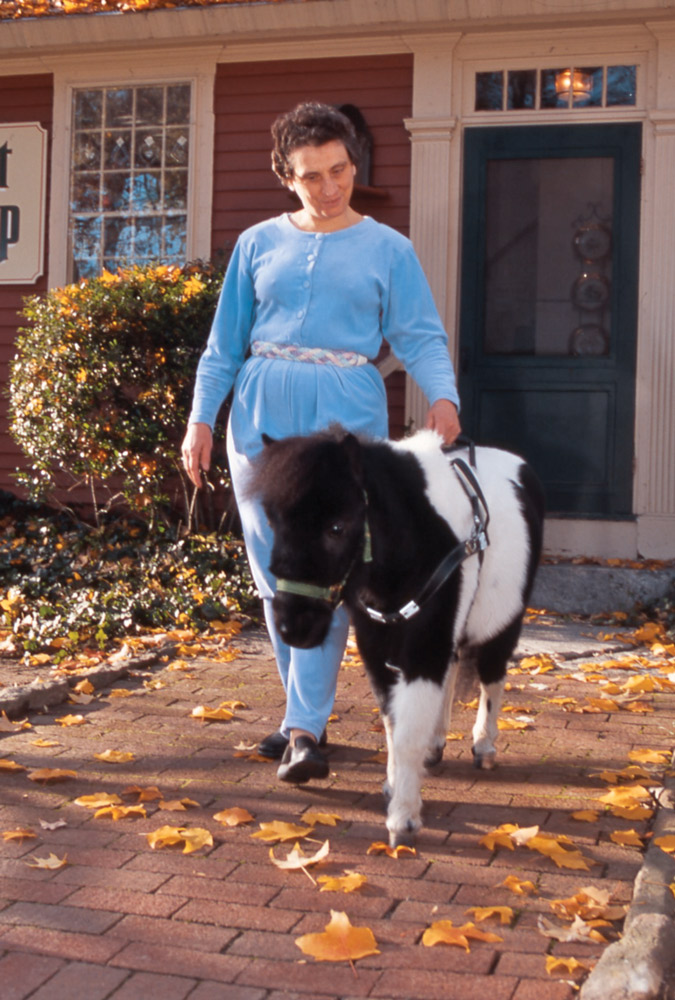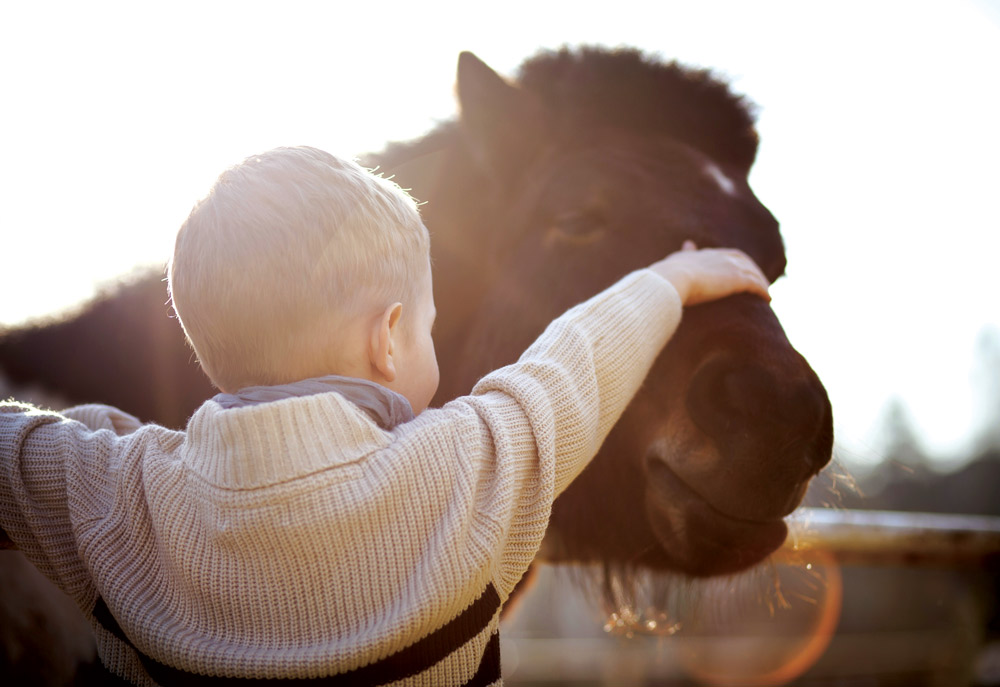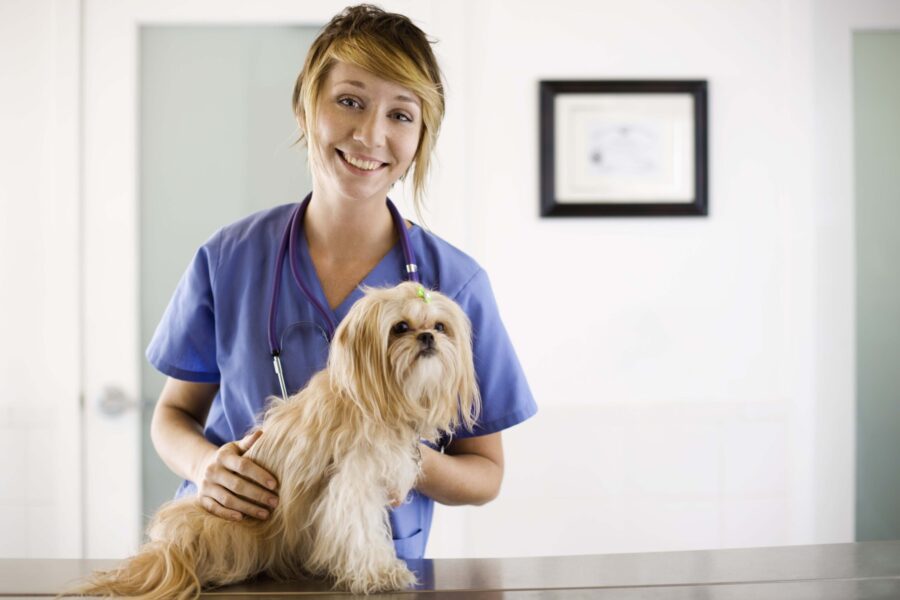Dogs aren’t the only animals that can serve as guides for the blind. Miniature horses like this clever filly are also proving to be excellent assistants.
Ann Edie has been legally blind since birth. Early on, she discovered that animals have an intuitive ability to assist people with vision problems, and has worked closely with dogs and horses for many years. After her canine working partner passed away, she considered a horse to guide her through the next years of her life.
Ann had always ridden as a child, and returned seriously to riding as an adult. It was then that she met Alexandra Kurland of the Clicker Center. Alexandra has been using clicker training techniques to work with horses since the early 1990s, and helped Ann work with her Arabian and Icelandic horses.
Birth of an Idea
Ann got thinking when she heard about Miniatures being trained as guide horses. Her own full-sized horses were already assisting her around the barn. Interpreting her needs, they help her avoid obstacles, retrieve dropped objects, and find doorways and gates. An additional bonus is that horses tend to live much longer than dogs, ensuring a much lengthier working relationship. After doing some research and visiting another guide horse in training, Alexandra and Ann searched for and found a promising 24” nine-month-old Miniature filly named Grosshill’s Panda Bear.
In her early stages of training, Panda lived with Alexandra. Her first lessons covered house training, socialization, being walked on a lead, car rides, and being exposed to different environments. Using Miniature horses as guide animals was a relatively new concept, so Alexandra and Ann were embarking on a largely experimental journey. Their goal was to determine whether, through clicker training, a horse could adjust to life as an assistance animal for the blind.
Laying the Foundation
During her early training, Panda accompanied Alexandra wherever she went. This included taking her to numerous clinics, symposiums and other busy events, so she could learn how to handle crowds and stand or lie patiently by her human for extended periods. It did not take long for Panda to draw crowds of interested people, full of questions about using Miniatures as guides. This interest presented Alexandra with extra training and socialization opportunities as she continued to work with Panda. The filly learned to relax and nap at times when her help was not needed, to relieve herself “on cue”, and to handle the fussing of her interested onlookers. She also learned to maneuver her handler around simple obstacles, negotiate stairs, and perform other tasks related to guide work.
Overcoming Unwanted Behaviors
At the beginning of her training, Panda had a tendency to rear when excited. She would pop up in the air and balance amazingly well on her hind legs. In a horse the size of Panda this was more entertaining than threatening, but it was still unacceptable, especially for a guide horse. Alexandra redirected her energy and used the clicker to reward her for more appropriate behavior. Her juvenile behavior was quickly replaced by the good manners she would need to be a guide horse.
As Panda continued to display maturity and an ability to pick things up quickly, Alexandra began to fine-tune the skills Panda would need for guide work. One of these was leading. On their daily walks together, Panda learned to position herself slightly in front of Alexandra and to take her around any obstacles in their path. She learned to stop at curb crossings, to find mailboxes and store entrances. She learned to track a straight line down sidewalks and handle the commotion of a busy city street crossing.
Stay with Me
The filly then needed to learn how to stay by her person’s side at liberty. Alexandra had been keeping Panda on a lead while in the house, but now she began to turn her loose and reward her with a click and small treat every time she chose to remain by Alexandra’s side. Alexandra then extended this training to open areas, and finally took Panda to a clinic to test her. Throughout the clinic, Panda displayed how solid her training was. During breaks, she was allowed “recess” and turned loose to play. She could quickly switch from play to work mode.
Bear Hugs
Alexandra then began to work on another skill Panda would need for guide work. Panda was a people magnet. While she enjoyed being cuddled by her “family”, she didn’t enjoy being handled by strangers. People reaching out to pet her made her squirm. Panda needed to learn to tolerate all this attention. To help her out, Alexandra taught Panda how to alert her blind handler that someone was petting her. Service animals need to be able to focus on their jobs. It’s important when you see a service animal – dog or horse – to ask first if it is okay to pet them and not simply to go up to them. Panda was given a way to tell her blind handler that there were people close by who might be blocking them from the best route forward.
Panda quickly graduated to more complex training. She learned how to help her handler negotiate obstacles that a Miniature could pass through or under, but a human couldn’t. These included overhead obstacles, and gaps between obstacles such as parked cars. In addition to learning and following routes, she began to alert her handler to changes in terrain, and to determine paths with less and less guidance. More importantly, Panda learned to alert her handler to unusual obstacles and tricky situations, and to refuse to do something if it wasn’t safe, referred to as intelligent disobedience.
Handing Over the “Reins”
It was time for Ann to take a test run with Panda. Their first walk was in Ann’s familiar neighborhood – success! They then ventured into Panda’s neighborhood, which Ann was not as familiar with, leaving her to completely trust the horse to guide her. Their third walk took place at an equine tradeshow, and Panda handled it very well. When Panda was twoand- a-half years old, she was ready to make the transition into full time guide work. She went to live with her blind owner. That was in 2003. Now, six-and-a-half years later, Panda has proven herself to be an outstanding guide.
The team has many years to look forward to together. Panda has shown that with the appropriate training, a horse can become a successful guide. “If you can dream it, you can train it!” Panda learned to alert her handler to unusual obstacles and tricky situations, and to refuse to do something if it wasn’t safe.
To read Panda’s full story, and learn more about guide horse training, visit theclickercenter.com. You can also read about Panda in the children’s book Panda, A Guide for Ann by Rosanna Hansen, published by Boyd.








